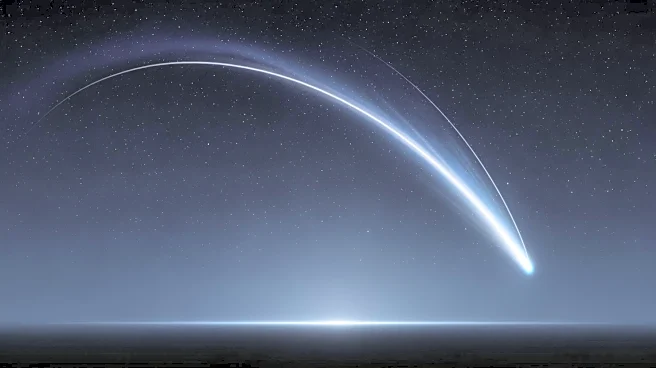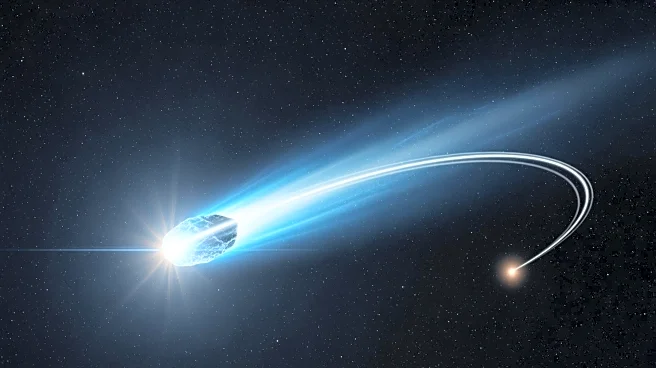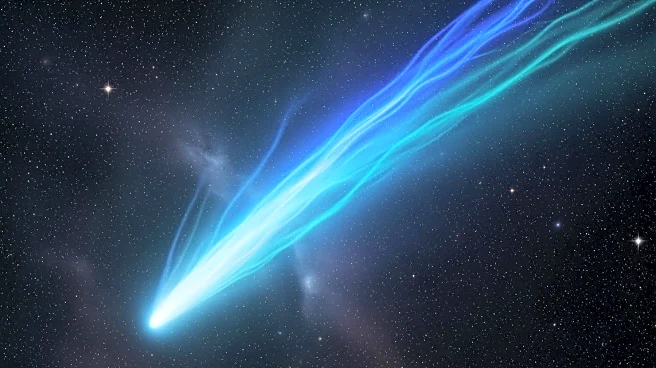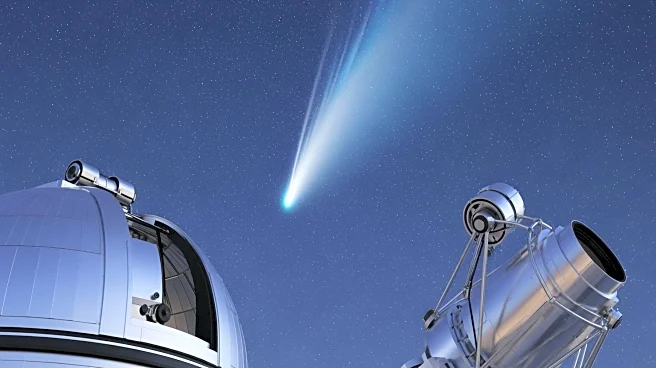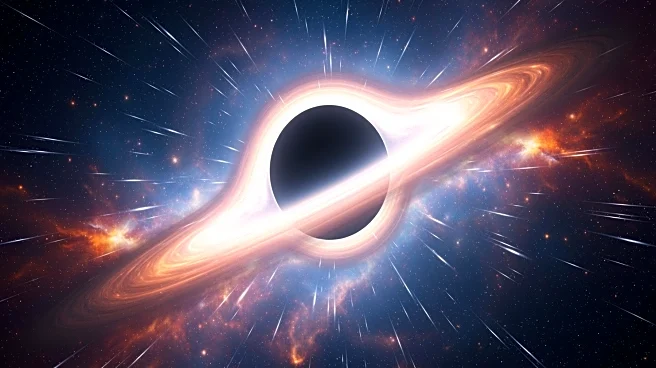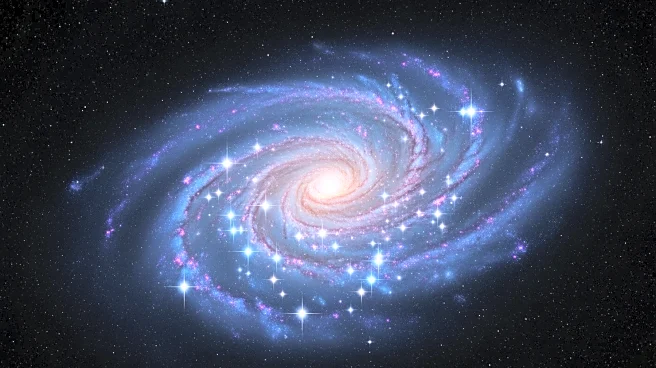What's Happening?
Comet C/2025 K1 (ATLAS) is undergoing fragmentation, with at least three visible pieces breaking away from the main body. This comet, originating from the Oort Cloud, is currently visible through telescopes,
offering a rare chance to observe its disintegration. Meanwhile, interstellar Comet 3I/ATLAS, originating from outside our solar system, is delighting astronomers with its bright appearance and unique characteristics. Observers are capturing images of both comets, with K1/ATLAS showing dynamic changes in brightness and structure, and 3I/ATLAS displaying a classic blue-green coma and ion tail.
Why It's Important?
The fragmentation of Comet K1/ATLAS provides a unique opportunity for astronomers to study the physical processes affecting comets as they approach the Sun. Understanding these processes can offer insights into the composition and behavior of comets, which are remnants from the early solar system. The presence of interstellar Comet 3I/ATLAS offers a rare chance to study an object from beyond our solar system, potentially providing information about the conditions and materials present in other parts of the Milky Way. These observations contribute to our understanding of cosmic phenomena and the diversity of celestial objects.
What's Next?
Astronomers will continue to monitor the fragmentation of Comet K1/ATLAS, observing its evolution and potential disintegration. The Virtual Telescope Project will broadcast a live feed of the comet's breakup, allowing the public to witness this celestial event. Observations of Comet 3I/ATLAS will continue as it moves through the solar system, with astronomers eager to capture more images and data. These events may lead to further research and publications on the behavior and characteristics of comets, enhancing our knowledge of these fascinating objects.


